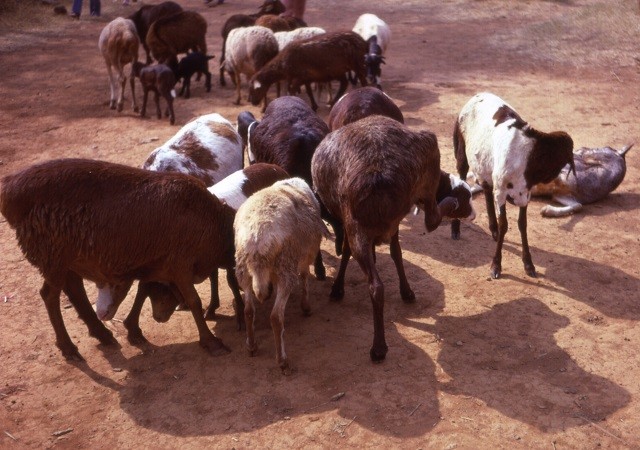

Lamb Stealing:
Ewes can steal the lambs of others before their own parturition and then reject their own lamb when it is born. Lambs seek out soft, warm, hairless areas (regardless of where they are), which can help with raising orphaned lambs but render stealing easier. Individual pens or partial barriers can usually prevent theft. Ewes will sequester the lambs at first, and providing them a shelter where this can be done will help. The smell of the wool is important to the ewe for individual lamb recognition, as is the shape and color of the lamb’s head. Ewes are more likely to accept lambs that have familiar head coloration.
Lamb Rejection:
Lamb rejection can be associated with the social hierarchy or due to behavioral, physiologic, or environmental stresses (eg, rain) at delivery. The smell of the wool is important to the ewe, and lambs that smell unfamiliar are more likely to be rejected. Experimental results show that lambs whose heads have been altered are at risk of rejection. Alteration of the tail does not have the same effect. If the rejection is noted sufficiently early, using a stanchion to confine the ewe with the lamb can address the problem. Tranquilization may be needed.
Cross-fostering:
Cross-fostering can be a successful solution for abandoned, rejected, or orphaned lambs. Cross-fostering is best addressed by fooling the ewe, using cervical stimulation (using balloons that stimulate oxytocin release and maternal behavior). Covering the lamb to be fostered with a t-shirt that the ewe’s own lamb has worn can provide an appropriate olfactory cue, as can the skin of the ewe’s own dead lamb.
 Contact Jaguza Support
Contact Jaguza Support